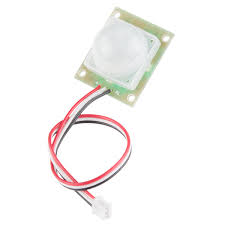Details of Motion Sensors

Motion Sensors
10,000 RwfMotion sensors are devices designed to detect and measure movement within a defined area. They play a critical role in various applications by sensing physical movement or vibrations and then triggering an action based on that detection. Here’s a breakdown of their core attributes and functionalities:
Types of Motion Sensors:
Passive Infrared (PIR): These sensors detect infrared radiation (heat) emitted by objects, especially humans and animals, and are commonly used in security systems, lighting, and occupancy detection.
Ultrasonic: Ultrasonic sensors emit sound waves and detect changes in frequency when those waves bounce back, identifying motion by sensing variations in reflected sound.
Microwave: These sensors use microwave pulses and measure the reflections off moving objects. They have a broader range than PIR sensors but can be more susceptible to interference.
Dual-Technology Sensors: These combine two types, like PIR and microwave, to reduce false alarms by requiring both sensors to detect motion simultaneously.
Key Applications:
Security Systems: Motion sensors are a foundational component in alarm systems, activating alerts when unauthorized movement is detected.
Lighting Control: They can trigger lights to turn on or off based on room occupancy, conserving energy in places like offices, stairways, or public restrooms.
Automated Systems: Motion sensors enable automation in smart home systems, HVAC control, and touchless faucets by detecting when a person is present or active.
Healthcare Monitoring: In elderly care or hospital settings, they detect activity or inactivity, helping to monitor patients' movements.
Operational Considerations:
Sensitivity and Range: Motion sensors vary in sensitivity and range; selecting the right type and configuration depends on the specific use case and environment.
Power Consumption: Some applications require low-power sensors to prolong battery life, especially in IoT devices and portable applications.
False Trigger Reduction: Factors such as heat, humidity, and noise can affect motion sensors, so different models incorporate technology to minimize false triggers.
Overall, motion sensors enhance efficiency, security, and convenience across multiple domains by providing automated responses to physical presence and movement.
Add to cart
Types of Motion Sensors:
Passive Infrared (PIR): These sensors detect infrared radiation (heat) emitted by objects, especially humans and animals, and are commonly used in security systems, lighting, and occupancy detection.
Ultrasonic: Ultrasonic sensors emit sound waves and detect changes in frequency when those waves bounce back, identifying motion by sensing variations in reflected sound.
Microwave: These sensors use microwave pulses and measure the reflections off moving objects. They have a broader range than PIR sensors but can be more susceptible to interference.
Dual-Technology Sensors: These combine two types, like PIR and microwave, to reduce false alarms by requiring both sensors to detect motion simultaneously.
Key Applications:
Security Systems: Motion sensors are a foundational component in alarm systems, activating alerts when unauthorized movement is detected.
Lighting Control: They can trigger lights to turn on or off based on room occupancy, conserving energy in places like offices, stairways, or public restrooms.
Automated Systems: Motion sensors enable automation in smart home systems, HVAC control, and touchless faucets by detecting when a person is present or active.
Healthcare Monitoring: In elderly care or hospital settings, they detect activity or inactivity, helping to monitor patients' movements.
Operational Considerations:
Sensitivity and Range: Motion sensors vary in sensitivity and range; selecting the right type and configuration depends on the specific use case and environment.
Power Consumption: Some applications require low-power sensors to prolong battery life, especially in IoT devices and portable applications.
False Trigger Reduction: Factors such as heat, humidity, and noise can affect motion sensors, so different models incorporate technology to minimize false triggers.
Overall, motion sensors enhance efficiency, security, and convenience across multiple domains by providing automated responses to physical presence and movement.

